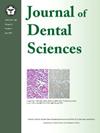Effect of deep pressure input on autonomic regulation during wisdom tooth extraction: From waiting room to surgery
IF 3.1
3区 医学
Q1 DENTISTRY, ORAL SURGERY & MEDICINE
引用次数: 0
Abstract
Background and purpose
Tooth extraction is a common dental procedure associated with heightened anxiety, particularly during the waiting period before treatment. This stress response is regulated by the autonomic nervous system (ANS), comprising the sympathetic nervous system (SNS), which induces excitatory responses, and the parasympathetic nervous system (PsNS), which promotes relaxation. Deep pressure input, delivered through weighted vests and blankets, has been shown to shift ANS dominance from the SNS to the PsNS, facilitating stress reduction. This study investigated the effects of deep pressure input on ANS modulation using a weighted vest during the waiting phase and a weighted blanket during the tooth extraction phase.
Materials and methods
Healthy adults were randomly assigned to a control group or an experimental group. The control-group subjects underwent wisdom tooth extraction without deep pressure input, while the experimental-group subjects wore a weighted vest during the waiting phase and used a weighted blanket during the tooth extraction procedure. Heart rate (HR), low-frequency heart rate variability (LF-HRV), and high-frequency heart rate variability (HF-HRV) were measured to assess ANS activity.
Results
The control-group subjects exhibited increased HR, elevated LF-HRV, and reduced HF-HRV, indicating the stress-induced sympathetic activation. In contrast, the experimental-group subjects showed significantly lower HR and higher HF-HRV, demonstrating the enhanced parasympathetic activation that persists throughout the tooth extraction procedure.
Conclusion
Deep pressure input for high-anxiety patients can effectively reduce stress and enhances the parasympathetic activation during the wisdom tooth extraction procedure. After a large-scale clinical study, it may enter clinical application for high-anxiety patients.
深度压力输入对智齿拔除过程中自主调节的影响:从候诊室到手术
背景和目的拔牙是一种常见的与高度焦虑相关的牙科手术,特别是在治疗前的等待期。这种应激反应是由自主神经系统(ANS)调节的,包括诱导兴奋反应的交感神经系统(SNS)和促进放松的副交感神经系统(PsNS)。研究表明,通过加重背心和毯子传递的深度压力输入可以将ANS的主导地位从SNS转移到PsNS,从而促进压力减轻。本研究通过在等待阶段使用加权背心和在拔牙阶段使用加权毯子来研究深压输入对ANS调制的影响。材料与方法健康成人随机分为对照组和实验组。对照组受试者在无深度压力输入的情况下拔智齿,实验组受试者在等待阶段穿着加重背心,在拔牙过程中使用加重毯子。测量心率(HR)、低频心率变异性(LF-HRV)和高频心率变异性(HF-HRV)来评估ANS活动。结果对照组患者HR升高,LF-HRV升高,HF-HRV降低,提示应激性交感神经激活。相比之下,实验组受试者表现出明显较低的HR和较高的HF-HRV,表明在整个拔牙过程中持续增强的副交感神经激活。结论深度压力输入可有效减轻高焦虑患者在拔智齿过程中的应激,增强副交感神经的激活。经过大规模的临床研究,有可能进入高焦虑患者的临床应用。
本文章由计算机程序翻译,如有差异,请以英文原文为准。
求助全文
约1分钟内获得全文
求助全文
来源期刊

Journal of Dental Sciences
医学-牙科与口腔外科
CiteScore
5.10
自引率
14.30%
发文量
348
审稿时长
6 days
期刊介绍:
he Journal of Dental Sciences (JDS), published quarterly, is the official and open access publication of the Association for Dental Sciences of the Republic of China (ADS-ROC). The precedent journal of the JDS is the Chinese Dental Journal (CDJ) which had already been covered by MEDLINE in 1988. As the CDJ continued to prove its importance in the region, the ADS-ROC decided to move to the international community by publishing an English journal. Hence, the birth of the JDS in 2006. The JDS is indexed in the SCI Expanded since 2008. It is also indexed in Scopus, and EMCare, ScienceDirect, SIIC Data Bases.
The topics covered by the JDS include all fields of basic and clinical dentistry. Some manuscripts focusing on the study of certain endemic diseases such as dental caries and periodontal diseases in particular regions of any country as well as oral pre-cancers, oral cancers, and oral submucous fibrosis related to betel nut chewing habit are also considered for publication. Besides, the JDS also publishes articles about the efficacy of a new treatment modality on oral verrucous hyperplasia or early oral squamous cell carcinoma.
 求助内容:
求助内容: 应助结果提醒方式:
应助结果提醒方式:


